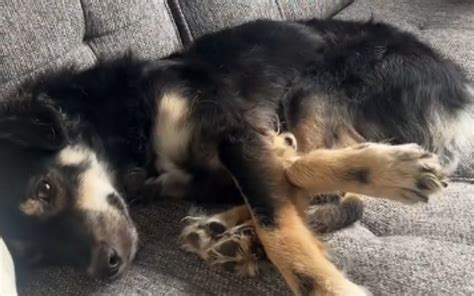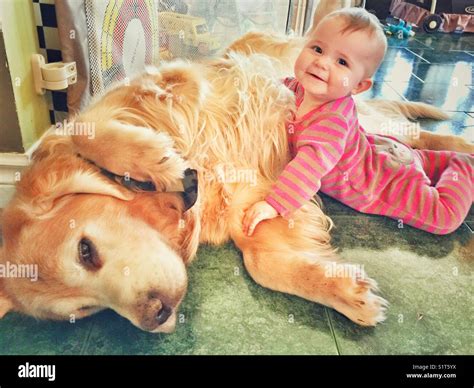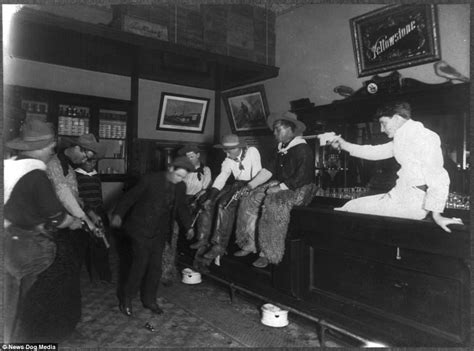
A rescued dog named Gus, initially terrified of human contact, has captured hearts online as he slowly learns to trust and enjoy cuddling with his new owner. The heartwarming journey, documented in a viral video, showcases Gus’s remarkable transformation from a fearful pup to a loving companion.
Gus, a small, mixed-breed dog, was adopted by his owner, Alex, after being rescued from a challenging environment where he experienced neglect and lacked socialization. Upon arrival at his new home, Gus exhibited extreme fear and anxiety, avoiding any physical interaction and cowering at the slightest movement. Alex recognized the need for patience and a gentle approach to help Gus overcome his past trauma and develop a sense of security.
The video, which has garnered millions of views across social media platforms, chronicles Gus’s gradual progress over several weeks. Initially, Gus would stiffen and tremble when Alex approached, flinching at any attempt to touch him. However, Alex persisted, using positive reinforcement techniques such as offering treats, speaking in a soothing voice, and allowing Gus to approach on his own terms.
“It took a lot of time and patience, but slowly, Gus started to realize that I wasn’t going to hurt him,” Alex explained. “I would just sit near him, talk to him, and offer him treats. Eventually, he started to come closer and sniff my hand.”
The video shows the incremental steps in Gus’s journey. At first, he would only tolerate brief, tentative pets. Gradually, he began to relax and lean into Alex’s touch. The turning point came when Gus, seemingly out of the blue, snuggled up to Alex on the couch.
“I was so surprised and overjoyed,” Alex said. “It was like he finally understood that it was safe to let his guard down and accept affection.”
Since that pivotal moment, Gus has become increasingly affectionate, seeking out cuddles and playtime with Alex. The video captures Gus playfully pawing at Alex for attention, wagging his tail enthusiastically, and even falling asleep in Alex’s arms.
The heartwarming story of Gus has resonated with viewers around the world, many of whom have shared their own experiences with rescuing and rehabilitating traumatized animals. The video serves as a reminder of the importance of patience, compassion, and understanding when working with animals who have experienced abuse or neglect. It also highlights the profound bond that can develop between humans and animals, even after overcoming significant challenges.
“Gus has taught me so much about resilience and the power of love,” Alex said. “He’s not just a pet; he’s family.”
The video’s popularity has also drawn attention to the importance of animal rescue and adoption. Shelters and rescue organizations across the country are filled with animals like Gus who are in need of loving homes. By choosing to adopt, people can give these animals a second chance at a happy and fulfilling life.
The American Society for the Prevention of Cruelty to Animals (ASPCA) estimates that approximately 6.3 million companion animals enter U.S. animal shelters nationwide every year. Of those, approximately 3.1 million are dogs and 3.2 million are cats. Finding homes for these animals is a constant challenge, and stories like Gus’s can help inspire others to consider adoption.
Beyond the immediate emotional impact, Gus’s story also underscores the therapeutic benefits of pet ownership. Studies have shown that interacting with animals can lower blood pressure, reduce stress, and increase levels of endorphins, which have mood-boosting effects. For individuals struggling with anxiety, depression, or loneliness, a companion animal can provide invaluable support and companionship.
In Gus’s case, it’s clear that the love and attention he receives from Alex have played a crucial role in his healing process. The consistent care, positive reinforcement, and safe environment have allowed Gus to overcome his fears and develop a sense of trust and security. His transformation serves as a testament to the power of human-animal connection and the ability of animals to heal from even the most profound trauma.
The viral video of Gus’s journey has not only brought joy to countless viewers but has also raised awareness about the importance of animal rescue, adoption, and the therapeutic benefits of pet ownership. As Gus continues to thrive in his new home, his story serves as an inspiration to others to open their hearts and homes to animals in need.
Frequently Asked Questions (FAQ)
1. What was Gus like when he was first adopted?
When Gus was first adopted, he was extremely fearful and anxious. He avoided physical contact, cowered at the slightest movement, and showed signs of trauma from his past experiences of neglect and lack of socialization. He was very hesitant to trust humans. According to Alex, “It took a lot of time and patience” to help Gus feel safe.
2. How did Alex help Gus overcome his fear?
Alex used a variety of positive reinforcement techniques to help Gus overcome his fear. These included:
- Offering treats and speaking in a soothing voice.
- Allowing Gus to approach on his own terms, without forcing interaction.
- Sitting near Gus and talking to him to create a sense of safety.
- Providing a consistent and predictable environment.
- Being patient and understanding, recognizing that Gus needed time to adjust.
- Gradually introducing physical touch and affection as Gus became more comfortable.
3. What was the turning point in Gus’s transformation?
The turning point occurred when Gus spontaneously snuggled up to Alex on the couch. This marked a significant shift in Gus’s behavior, indicating that he had finally begun to trust Alex and feel safe enough to accept affection. Alex stated, “I was so surprised and overjoyed. It was like he finally understood that it was safe to let his guard down and accept affection.”
4. Why has Gus’s story resonated with so many people?
Gus’s story has resonated with many people for several reasons:
- Heartwarming Transformation: The video captures Gus’s remarkable journey from a fearful, traumatized dog to a loving, affectionate companion. This transformation is emotionally powerful and inspiring.
- Relatability: Many viewers have shared their own experiences with rescuing and rehabilitating animals, making Gus’s story relatable and inspiring a sense of community.
- Positive Message: The story highlights the importance of patience, compassion, and understanding when working with traumatized animals, offering a message of hope and resilience.
- Promotion of Animal Rescue: Gus’s story raises awareness about the importance of animal rescue and adoption, encouraging others to consider giving animals in need a second chance.
- Therapeutic Benefits: The story indirectly touches upon the therapeutic benefits of pet ownership, showcasing how animals can help individuals heal from emotional wounds and find companionship.
5. What can people learn from Gus’s story?
People can learn several important lessons from Gus’s story:
- Patience is Key: Rehabilitating a traumatized animal requires significant patience and understanding. It’s important to allow the animal to adjust at their own pace and avoid forcing interaction.
- Positive Reinforcement Works: Using positive reinforcement techniques, such as treats, praise, and gentle touch, can help build trust and encourage positive behavior.
- Love Can Heal: Love and affection can play a crucial role in helping animals overcome their past trauma and develop a sense of security.
- Animal Rescue Matters: Animal rescue and adoption provide a second chance for animals in need and can bring immense joy and companionship to both the animal and the adopter.
- Human-Animal Connection: The bond between humans and animals can be incredibly powerful and transformative, offering mutual benefits and enriching both lives.
- Resilience: Gus’s story is a testament to the resilience of animals and their ability to heal from even the most profound trauma. It showcases the importance of giving animals a chance to overcome their past and find happiness.
— Expanded In-depth Analysis—
The story of Gus is more than just a heartwarming tale of a rescued dog learning to cuddle; it’s a compelling narrative that touches on broader themes of animal welfare, the human-animal bond, and the therapeutic benefits of pet ownership. By delving deeper into the nuances of Gus’s journey, we can gain a greater understanding of the complexities involved in rescuing and rehabilitating traumatized animals.
The Impact of Trauma on Animals:
Animals that have experienced neglect, abuse, or abandonment often suffer from deep-seated trauma that can manifest in a variety of ways. These behaviors can include:
- Fear and Anxiety: Displaying excessive fear, nervousness, and anxiety, often triggered by specific stimuli or situations.
- Aggression: Exhibiting aggressive behavior, such as biting, growling, or snapping, as a defense mechanism.
- Withdrawal: Becoming withdrawn and unresponsive, avoiding social interaction and showing little interest in their surroundings.
- Destructive Behavior: Engaging in destructive behaviors, such as chewing, scratching, or digging, as a way to cope with stress or anxiety.
- Difficulty with Trust: Struggling to trust humans and forming relationships due to past negative experiences.
In Gus’s case, his initial fear and avoidance of human contact were clear indicators of his past trauma. He was hyper-vigilant, easily startled, and reluctant to allow anyone to touch him. These behaviors are common in rescued animals who have learned to associate humans with pain, fear, or neglect.
The Importance of a Gradual and Patient Approach:
Rehabilitating a traumatized animal requires a patient and gradual approach that focuses on building trust and creating a safe and predictable environment. It’s crucial to avoid overwhelming the animal with too much attention or forcing interaction before they are ready. Instead, rescuers and adopters should focus on:
- Creating a Safe Space: Providing the animal with a quiet and comfortable space where they can retreat when feeling overwhelmed or anxious.
- Establishing a Routine: Creating a consistent daily routine that includes feeding, walks, and playtime to help the animal feel secure and predictable.
- Using Positive Reinforcement: Employing positive reinforcement techniques, such as treats, praise, and gentle touch, to reward positive behaviors and build trust.
- Avoiding Punishment: Refraining from using punishment or harsh methods, as these can further traumatize the animal and damage their trust.
- Reading Body Language: Paying close attention to the animal’s body language to understand their comfort level and avoid pushing them beyond their limits.
Alex’s success in helping Gus overcome his fear was largely due to her patience and understanding. She recognized that Gus needed time to adjust and that she couldn’t force him to trust her. Instead, she focused on creating a safe and supportive environment where Gus could gradually learn to relax and feel secure.
The Role of the Human-Animal Bond:
The human-animal bond is a mutually beneficial and dynamic relationship between people and animals that is influenced by behaviors essential to the health and well-being of both. This bond can provide numerous benefits, including:
- Emotional Support: Animals can provide companionship, comfort, and emotional support, helping to alleviate feelings of loneliness, anxiety, and depression.
- Stress Reduction: Interacting with animals has been shown to lower blood pressure, reduce stress hormones, and increase levels of endorphins, which have mood-boosting effects.
- Increased Physical Activity: Owning a pet, particularly a dog, can encourage increased physical activity through walks, playtime, and other forms of exercise.
- Social Interaction: Animals can facilitate social interaction by providing a common interest and conversation starter with other pet owners.
- Sense of Purpose: Caring for an animal can provide a sense of purpose and responsibility, which can be particularly beneficial for individuals struggling with mental health issues.
In Gus’s case, the human-animal bond between him and Alex was instrumental in his healing process. Alex’s love, care, and attention provided Gus with the emotional support he needed to overcome his past trauma and develop a sense of trust and security.
The Therapeutic Benefits of Pet Ownership for Rescued Animals:
While pet ownership offers numerous benefits for humans, it can also be incredibly therapeutic for rescued animals. Providing a loving and stable home can help these animals:
- Overcome Trauma: By creating a safe and predictable environment, pet owners can help rescued animals overcome their past trauma and develop a sense of security.
- Build Trust: Through consistent care, positive reinforcement, and gentle interaction, pet owners can help rescued animals build trust and form strong bonds.
- Develop Social Skills: By providing opportunities for socialization with other animals and humans, pet owners can help rescued animals develop social skills and become more confident.
- Improve Physical Health: Providing proper nutrition, exercise, and veterinary care can help rescued animals improve their physical health and overall well-being.
- Find Happiness: By giving rescued animals a loving home and a second chance at life, pet owners can help them find happiness and experience the joys of companionship.
Gus’s transformation from a fearful, traumatized dog to a loving, affectionate companion is a testament to the therapeutic benefits of pet ownership for rescued animals. By providing Gus with a safe and supportive environment, Alex helped him overcome his past trauma and find happiness in his new home.
The Broader Implications for Animal Welfare:
Gus’s story also has broader implications for animal welfare, highlighting the importance of:
- Animal Rescue and Adoption: Encouraging people to adopt animals from shelters and rescue organizations, rather than purchasing them from breeders or pet stores.
- Responsible Pet Ownership: Promoting responsible pet ownership practices, such as providing proper nutrition, exercise, veterinary care, and socialization.
- Combating Animal Abuse and Neglect: Raising awareness about animal abuse and neglect and supporting efforts to prevent and prosecute these crimes.
- Supporting Animal Welfare Organizations: Donating time or money to animal welfare organizations that provide shelter, care, and advocacy for animals in need.
- Advocating for Animal Rights: Supporting legislation and policies that protect the rights and welfare of animals.
By sharing Gus’s story, Alex hopes to inspire others to consider adopting a rescued animal and to become advocates for animal welfare. She believes that every animal deserves a loving home and a chance to live a happy and fulfilling life.
The Long-Term Commitment:
Adopting a rescued animal is a long-term commitment that requires patience, understanding, and a willingness to adapt to the animal’s individual needs. It’s important to be prepared for potential challenges, such as behavioral issues, health problems, or adjustment difficulties. However, the rewards of rescuing an animal can be immeasurable, as Gus’s story clearly demonstrates. The love, companionship, and gratitude that rescued animals offer can enrich our lives in profound ways.
Gus’s story is a powerful reminder of the transformative power of love, compassion, and patience. It’s a testament to the resilience of animals and their ability to heal from even the most profound trauma. By opening our hearts and homes to animals in need, we can make a positive difference in their lives and create a more compassionate world for all. The viral video of Gus not only warms hearts but also serves as an educational tool, reminding people about the responsibilities and rewards of adopting a rescue animal. The positive impact of this story can encourage potential pet owners to consider adoption, ultimately helping more animals find loving homes.









